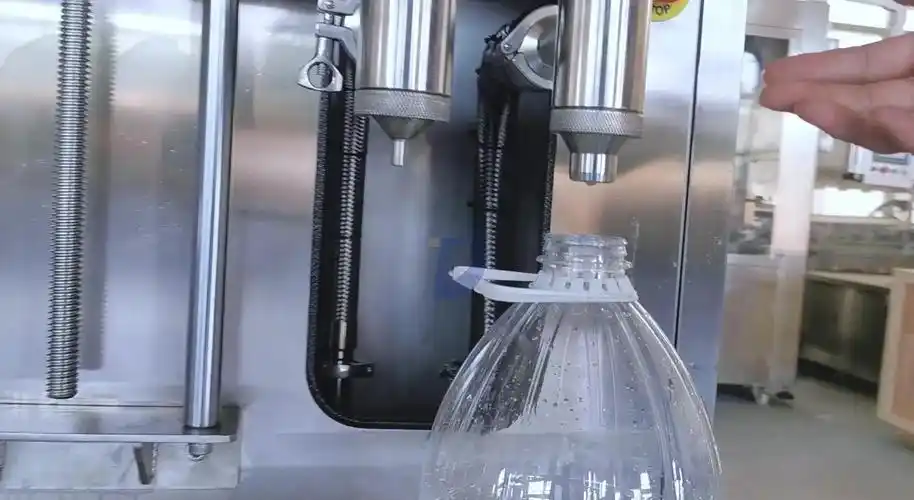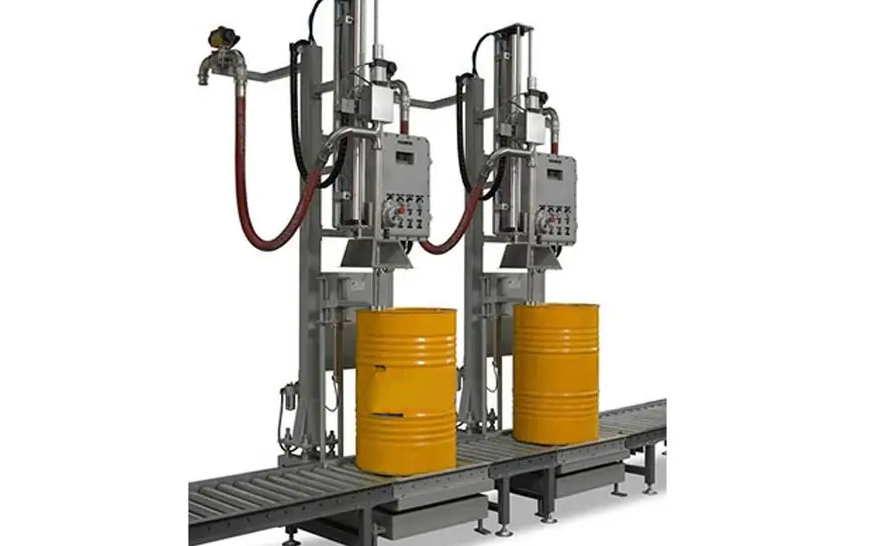Introduction: The Heart of Your Packaging Line
In the world of manufacturing, the moment of truth often happens at the packaging stage. A product, meticulously crafted and formulated, finally meets its container. The efficiency, accuracy, and hygiene of this process are paramount. It protects the product, assures the customer of its quality, and ultimately defines your brand’s reputation on the shelf.
For anyone responsible for selecting packaging equipment, the choice between an automatic filling machine and a semi-automatic filling machine is a fundamental crossroads. This decision is far more nuanced than simply selecting a “premium” or “budget” option. It’s a strategic business choice that impacts your:
Capital Expenditure (CAPEX) and Operational Expenditure (OPEX)
Production scalability and throughput
Product consistency and quality control
Labor requirements and skill sets
Long-term flexibility and growth potential
Choosing incorrectly can lead to crippling bottlenecks, wasted investment, or an inability to meet market demand. This comprehensive guide will dissect every aspect of automatic and semi-automatic filling machines, providing you with the knowledge to make the perfect, cost-effective choice for your operation today and in the future.
Before we dive into comparisons, let’s establish a clear understanding of what each machine is and how it operates.
What is a Semi-Automatic Filling Machine?
A semi-automatic filler is a piece of equipment that automates the core act of dispensing a precise volume of product but requires significant manual intervention to complete the entire packaging cycle.
How it Works: The Human-Machine Dance
Manual Placement: An operator places an empty container (bottle, jar, pouch) under, or into, the filling nozzle(s).
Activation: The operator initiates the filling cycle via a foot pedal, hand switch, or by pressing the container against a trigger mechanism.
Automated Dispensing: The machine takes over, accurately measuring and discharging the predetermined amount of product into the container.
Manual Completion: The operator removes the filled container, moves it to a separate capping station, and then places a new empty container to repeat the process.
Key Takeaway: The machine handles the precision task of metering, but the human operator is the integral control system, responsible for the pace, placement, and transfer of containers. It’s a “single-station” solution.
What is an Automatic Filling Machine?
An automatic filler is an integrated system, often a central component of a full packaging line, that performs the entire filling process without direct, hands-on operator involvement for each cycle.
How it Works: The Synchronized Symphony
Automatic Infeed: Empty containers are fed into the machine’s conveyor system for automated filling, often via an unscrambler or from a previous production step.
Container Handling: The machine uses a rotating carousel, an in-line linear system, or an indexing system with pockets to precisely position each container under the filling nozzles.
Pre-Programmed Filling: Containers are filled simultaneously (e.g., 8, 12, or 24 at a time) according to pre-set parameters in a Programmable Logic Controller (PLC). No manual trigger is needed.
Integrated Next Steps: The filled containers are automatically conveyed away to the next integrated station, which could be capping, lidding, labeling, induction sealing, or packaging.
Operator Role: The operator’s job is to monitor the control panel, ensure hoppers are supplied with product, manage the supply of empty containers and caps, and perform quality checks. They oversee the process rather than participate in it.
Key Takeaway: The machine, guided by its PLC, is the master of the entire sequence. The operator is a supervisor and system manager.

Let’s move beyond the basic definitions and explore the critical operational and business differences.
Semi-Automatic: Low automation, high involvement. The process is a partnership. The machine’s speed is directly tied to the operator’s speed, consistency, and endurance. Production stops when the operator stops. It’s ideal for processes where human judgment at each step is still valuable.
Automatic: High automation, low involvement. The process is a self-contained system. Once started, it will run continuously at its programmed speed until stopped or interrupted by a fault. Human involvement is strategic (supervision, maintenance) rather than tactical (handling each container).
Semi-Automatic: Low to Medium Speed. Output is measured in containers per minute and is inherently limited by human speed. A typical single-head semi-automatic piston filler might achieve 15-30 containers per minute (CPM) with a skilled operator. Output can be increased by adding more machines and more operators, but this scales labor costs linearly.
Automatic: High to Very High Speed. Output is measured in containers per hour. Even a basic automatic rotary piston filler can easily achieve 60-120 CPM. Large-scale rotary systems for beverages can exceed 1,000 CPM. The ceiling for production capacity is vastly higher, making it the only option for mass-market products.
This is the most crucial financial consideration.
Semi-Automatic: Initial Investment (CAPEX): Low. The machines are mechanically simpler, with minimal electronics and no need for complex conveying systems. This makes them exceptionally accessible for startups and small businesses.
Operational Cost (OPEX): High. The primary operational cost is labor. One machine typically requires one dedicated operator. As production demand grows, you don’t just buy more machines; you hire, train, and manage more people, incurring ongoing wages, benefits, and management overhead.
Automatic:
Initial Investment (CAPEX): High. The cost encompasses not just the filler itself but also the PLC, sensors, conveyors, and often the integration of other modules (like cappers). The price tag is significant.
Operational Cost (OPEX): Low. One or two operators can monitor an entire automated line running at high speed. The labor cost per unit produced is dramatically lower. The TCO often becomes favorable over a 1-3 year period due to these massive labor savings and higher output.
Semi-Automatic Liquid Filling Machines: Accuracy is high if the operator is consistent. However, factors like operator fatigue, minor variations in container placement, and rushing can introduce variability. The fill volume might have a slightly wider tolerance range over an 8-hour shift.
Automatic: Accuracy and consistency are superior and unwavering. The machine places and fills each container in an identical, repeatable manner, shift after shift. This eliminates human error and ensures every product that leaves your line meets exact specifications, which is critical for compliance, cost control (avoiding product give-away), and brand integrity.
Semi-Automatic:The Champion of Flexibility. Changing from one container to another is usually trivial—it might just involve a simple adjustment or no change at all. Changing products is also straightforward; the machine is easy to disassemble and clean manually. This makes it perfect for short runs, custom products, and R&D labs.
Automatic:The Master of Specialization. Changeovers can be complex and time-consuming. Switching to a dramatically different container size might require changing the entire conveyor rail, filling nozzles, and pocket plates. While modern automatics have quick-change features, it still require technical skill and downtime. They are designed for long runs of the same container and product.
Semi-Automatic: Open design allows for easy access for cleaning but also presents a higher risk of contamination from the operator and the environment. They are less suitable for sterile or cleanroom applications unless placed in a highly controlled environment.
Automatic: Can be designed with closed systems and made from high-grade stainless steel with polished surfaces. Many support Clean-In-Place (CIP) and Sterilize-In-Place (SIP) systems, allowing for automated cleaning and sterilization without disassembly. This is a non-negotiable requirement for pharmaceuticals, certain foods, and nutraceuticals.
Semi-Automatic: Compact and self-contained. A single machine requires minimal floor space and can be moved relatively easily.
Automatic: Requires a significant and dedicated footprint for the machine, conveyors, and upstream/downstream equipment. The layout must be carefully planned and is generally permanent.

Use this guide to match the machine type to your business reality.
Choose a Semi-Automatic Filling Machine if:
You are a startup or small business with limited capital for initial investment.
Your production volumes are low to medium
You have a wide variety of products and container sizes and need to switch between them frequently .
You are in the R&D, pilot, or small-batch stage and need a flexible machine for testing and small-scale production.
Your product is highly valuable or viscous where careful manual handling is still preferred.
Labor costs are not a primary concern in your region or business model.
Choose an Automatic Filling Machine if:
You have high or growing production demands that require scaling into the tens of thousands of units per day.
You need to minimize your long-term cost per unit, and the calculated ROI justifies the high initial investment.
Product consistency and accuracy are paramount for quality control, regulatory compliance, or brand standards.
You require high-hygiene standards, CIP/SIP, and a closed system for your product (e.g., pharmaceuticals, dairy, juices).
You are running long production cycles with the same container and product, making changeover speed less critical.
You are integrating into a full automated packaging line and need a machine that can communicate with upstream and downstream equipment ( Industry 4.0).
Chapter 4: Beyond the Binary: Trends and Future Considerations
The line between automatic and semi-automatic is blurring with new technologies.
Collaborative Robotics (Cobots): Cobots are now being integrated to handle the loading/unloading of semi-automatic machines, creating a hybrid model that boosts output without the full cost of a fully automatic system.
Modular Automation: Some manufacturers offer semi-automatic platforms that can be upgraded with automatic infeed and discharge conveyors later, providing a scalable path to automation.
Industry 4.0 and IoT: Even smaller semi-automatic machines are gaining smart features like data tracking on fills per cycle, which helps with production reporting and traceability.

The choice between an automatic and semi-automatic filling machine is not a question of which is “better” in a vacuum. It is a question of which is better for you.
Semi-automatic machines offer flexibility and affordability, making them the perfect tool for businesses that value adaptability, have diverse product lines, or are in the growth phase where capital preservation is key.
Automatic machines offer scale and efficiency, making them the powerful engine for businesses that are focused on dominating a market, optimizing unit economics, and producing flawless consistency at high volumes.
Audit your current needs, project your growth trajectory for the next 3-5 years, and run the numbers on both CAPEX and OPEX. By aligning your equipment choice with your overarching business strategy, you will invest in a solution that not only fills containers but also propels your business forward.